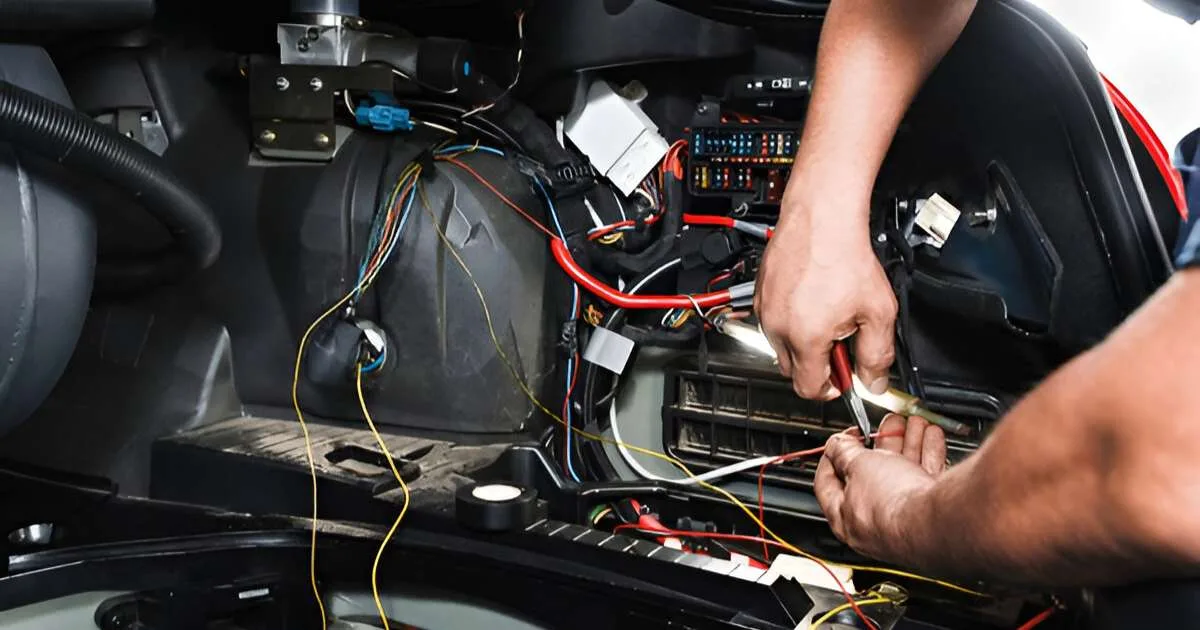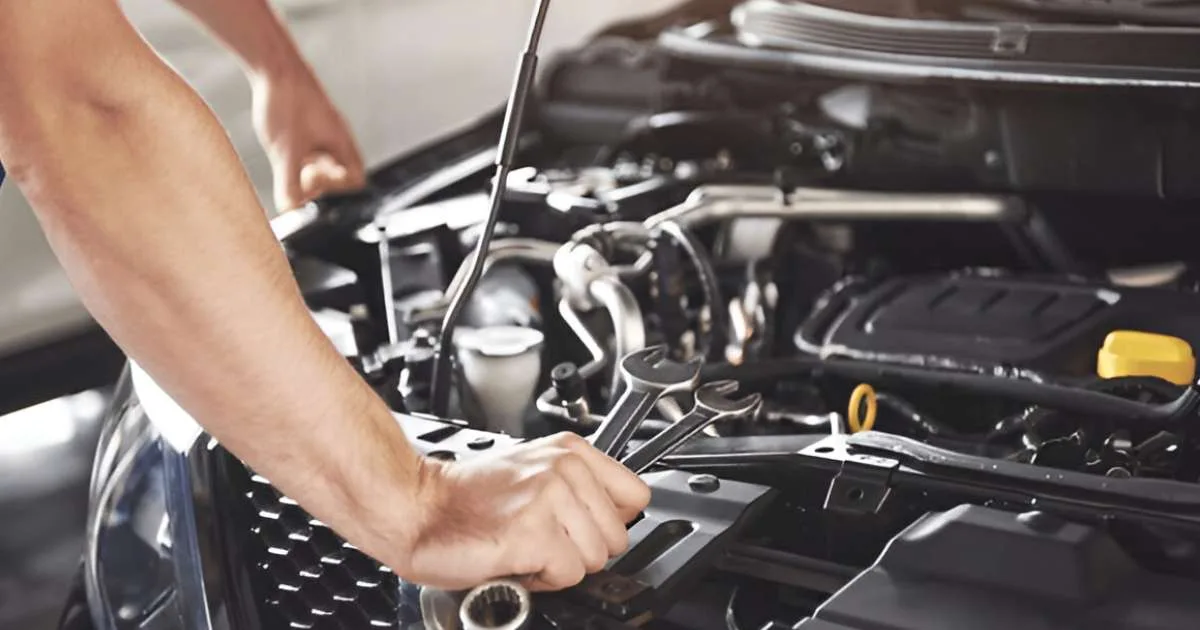
Under your car hood lies a world of mechanical and electrical components, from latches securing it to insulation muffling the engine's roar. These essential parts ensure your vehicle runs smoothly and safely.
Exploring what's under your car hood can feel like unveiling a mystery for many. It's not just about the engine that powers your journey; there's a complex network of parts playing crucial roles. Latches keep the hood securely closed, protecting vital components inside.
Insulation reduces noise and controls temperature, contributing to a comfortable drive. Beyond these, you’ll find the battery, alternator, coolant system, and more, each with a specific function that supports your car's performance and safety. Understanding these components can empower car owners, providing insights into maintenance needs and the workings of their vehicle. This knowledge not only enhances vehicle longevity but also ensures a smoother, safer driving experience.
Introduction To Auto Innovations
Pioneering The Auto Industry
Early cars were basic and functional. Pioneers in the auto industry broke new ground. They introduced features for safety, comfort, and performance. Innovations began with simple improvements. These included better latches for secure closing. They also involved more robust engines for power.The Evolution Of Vehicle Features
Over time, features under the hood evolved. This evolution brought us enhanced insulation. It helps in noise reduction and temperature control. Engines became more efficient. Car components are now smarter and safer. Modern cars even self-diagnose problems. This makes maintenance easier.- Insulation materials have improved.
- Engines are more fuel-efficient.
- Latches are now more secure.
 The Magic Of Latches
The Magic Of Latches
The Magic Of Latches
The Role Of Latches In Vehicle Security
Latches play a crucial role in keeping our cars safe. They are the guardians of our vehicle's hood, doors, and trunk. Without them, these parts would swing open, leading to potential hazards. Here are some key points about latches and vehicle security:- Prevent unauthorized access: Latches keep the hood and trunk locked, safeguarding the engine and valuables.
- Ensure safety: By keeping doors and hoods securely closed, latches prevent accidents during travel.
- Maintain vehicle integrity: Latches help preserve the structural integrity of a vehicle by keeping parts in place.
How Latches Have Changed Over Time
Latches have evolved significantly over the years. This evolution reflects advances in technology and changing safety standards. Here’s a brief overview:| Time Period | Features |
|---|---|
| Early Vehicles | Simple mechanical latches |
| Mid-20th Century | Introduction of safety latches |
| Modern Times | Electronic and smart latches with sensors |
Sealing The Deal With Insulation
Insulation's Impact On Comfort And Efficiency
Have you ever wondered why your car stays cool in summer and warm in winter? Insulation is the secret. It blocks heat from the engine and keeps the cabin comfortable. This means less work for your air conditioning or heating, saving fuel.- Enhances climate control within the cabin
- Reduces engine noise for a quieter ride
- Saves energy by aiding temperature regulation
Advancements In Auto Insulation Materials
Insulation materials have evolved. New technologies offer better protection with less bulk. Lightweight, durable materials are now standard. They're designed for extreme temperatures and noise reduction.| Material | Benefits |
|---|---|
| Foam | Light, great for sound dampening |
| Fiberglass | Resists heat, lasts long |
| Aerogel | Super insulator, thin layers work well |
The Power Of Paint
Paint Technologies And Durability
Car paint must endure a lot. It faces sun, rain, and scratches daily. Advanced paint technologies ensure your car's coat stays tough. These paints use innovative formulas. They resist fading and keep their gloss for years.- Urethane paints offer a hard shell against damage.
- Acrylic polyurethane blends durability with a deep shine.
- Ceramic coatings add an extra layer of protection.
Eco-friendly Innovations In Auto Paint
The auto industry now prioritizes our planet. Eco-friendly auto paints reduce harmful emissions. They also limit the use of volatile organic compounds (VOCs).| Type of Paint | Benefits |
|---|---|
| Waterborne Paints | Less VOCs, safer for the environment |
| High-Solid Paints | Thicker application, less solvent needed |
| Powder Coatings | No solvents used, virtually zero VOCs |
 Lighting The Way Forward
Lighting The Way Forward
Lighting The Way Forward
Led Revolution In Auto Lighting
Before, cars had simple lights. Now, LED lights have changed the game. These lights are brighter and last longer than old ones.- Energy Efficient: LED lights use less power.
- Durable: They can handle bumps and shakes on the road.
- Variety: You can find them in many colors and styles.
Smart Lights And Safety
Smart lights do more than just shine. They help keep us safe on the road. These lights can change direction and adjust brightness based on where you are driving. This means you can see better at night and in bad weather.| Feature | Benefit |
|---|---|
| Adaptive Lighting | Lights turn with the steering wheel. |
| Automatic High Beams | Switch between high and low beams automatically. |
| Daytime Running Lights | Make your car visible during the day. |

Credit: shoptntparts.com
Winds Of Change: Aerodynamics
Aerodynamic Designs For Fuel Efficiency
Car shapes evolve for better air flow. Designers craft contours that reduce resistance. Smooth lines and sleek bodies are not just stylish. They also save fuel.- Front air dams direct airflow.
- Rear spoilers cut turbulence.
- Underbody panels smooth the underside.
Future Trends In Aerodynamics
Tomorrow's vehicles promise even greater efficiency. Designers are exploring new frontiers. They are shaping the next wave of aerodynamic innovation.| Feature | Benefit |
|---|---|
| Active Aerodynamics | Parts move for optimal air flow. |
| Electrification | Battery packs aid in air smoothing. |
| Computational Fluid Dynamics | Simulations lead to better designs. |
Infotainment Systems
The Rise Of Connected Cars
Today's vehicles are smarter than ever. Infotainment systems are the brains behind this intelligence. They keep drivers connected through their smartphones and the internet. With a touch or a voice command, you can navigate to your destination, stream music, or check the weather.- Seamless smartphone integration via Apple CarPlay or Android Auto
- Real-time navigation with live traffic updates
- Access to streaming services for music and podcasts
Balancing Entertainment And Safety
While these systems provide entertainment, safety remains a priority. Developers design interfaces that minimize distractions. Large, clear displays and voice commands help keep your eyes on the road.| Feature | Safety Benefit |
|---|---|
| Voice Control | Hands-free operation |
| Head-Up Display | Important info in line of sight |
| Rear Camera | Enhanced visibility while reversing |
- Proximity alerts for nearby vehicles
- Lane departure warnings
- Emergency assistance services
 Material Matters
Material Matters
Material Matters
Material Matters are crucial for your car's performance. Under your car hood lies a world of components. They need to be strong yet light. They must also be eco-friendly. Let's dive into the materials that meet these needs.
Composite Materials For Lightweight Strength
Cars need materials that combine lightness with durability. Composite materials serve this purpose well. They are made from two or more substances. This mix gives them unique properties.- Fiberglass
- Carbon fiber
- Resin combinations
Recycled Materials For Sustainable Production
Sustainability is key in manufacturing. Car makers now use recycled materials. This choice helps our planet.| Material | Use | Benefit |
|---|---|---|
| Recycled plastics | Insulation, panels | Reduces waste |
| Recycled metals | Engine parts, frames | Saves resources |
| Recycled rubber | Hoses, seals | Lessens rubber production |
Conclusion: The Road Ahead
Embracing Future Technologies
The automotive industry is on the cusp of a revolution. Cars are becoming smarter and more connected. Future hoods will house advanced systems. These will manage everything from navigation to safety.- Electric engines will dominate, reducing emissions.
- Self-healing materials could fix small scratches and dents.
- AI-driven diagnostics will predict and prevent failures.
The Ongoing Journey Of Auto Innovation
Innovation under the hood is a journey without end. New discoveries push the boundaries further. Tomorrow's vehicles will be safer, more efficient, and smarter.| Year | Innovation |
|---|---|
| 2025 | Widespread electric vehicle adoption |
| 2030 | Introduction of self-repairing body parts |
| 2040 | Autonomous vehicles become the norm |

Credit: www.reddit.com

Credit: www.reddit.com
Frequently Asked Questions
What Components Are Inside A Car Hood?
Under a car hood, you'll typically find the engine, radiator, battery, air filter, brake fluid reservoir, and fuse box. These are essential for the vehicle's operation.
How Does Car Insulation Improve Performance?
Car insulation under the hood reduces engine noise and helps maintain optimal operating temperatures. This can lead to better performance and efficiency.
Why Are Car Latches Important For Safety?
Car latches secure the hood, preventing it from opening while driving, which ensures visibility and safety. They are crucial for maintaining the hood's position.
What Regular Checks Should Be Under The Hood?
Regular checks under the hood should include engine oil level, coolant level, brake fluid, and battery condition. These ensure your car runs smoothly and reliably.
Conclusion
Peeking under your car hood reveals a complex world of components crucial for performance and safety. From secure latches to robust insulation, each part plays a vital role. Remember, understanding what lies beneath can lead to better maintenance decisions and a longer vehicle lifespan.
Embrace the knowledge and drive with confidence.
Disclosure
Some links may be affiliate links. That means we may earn a small commission at no extra cost to you.